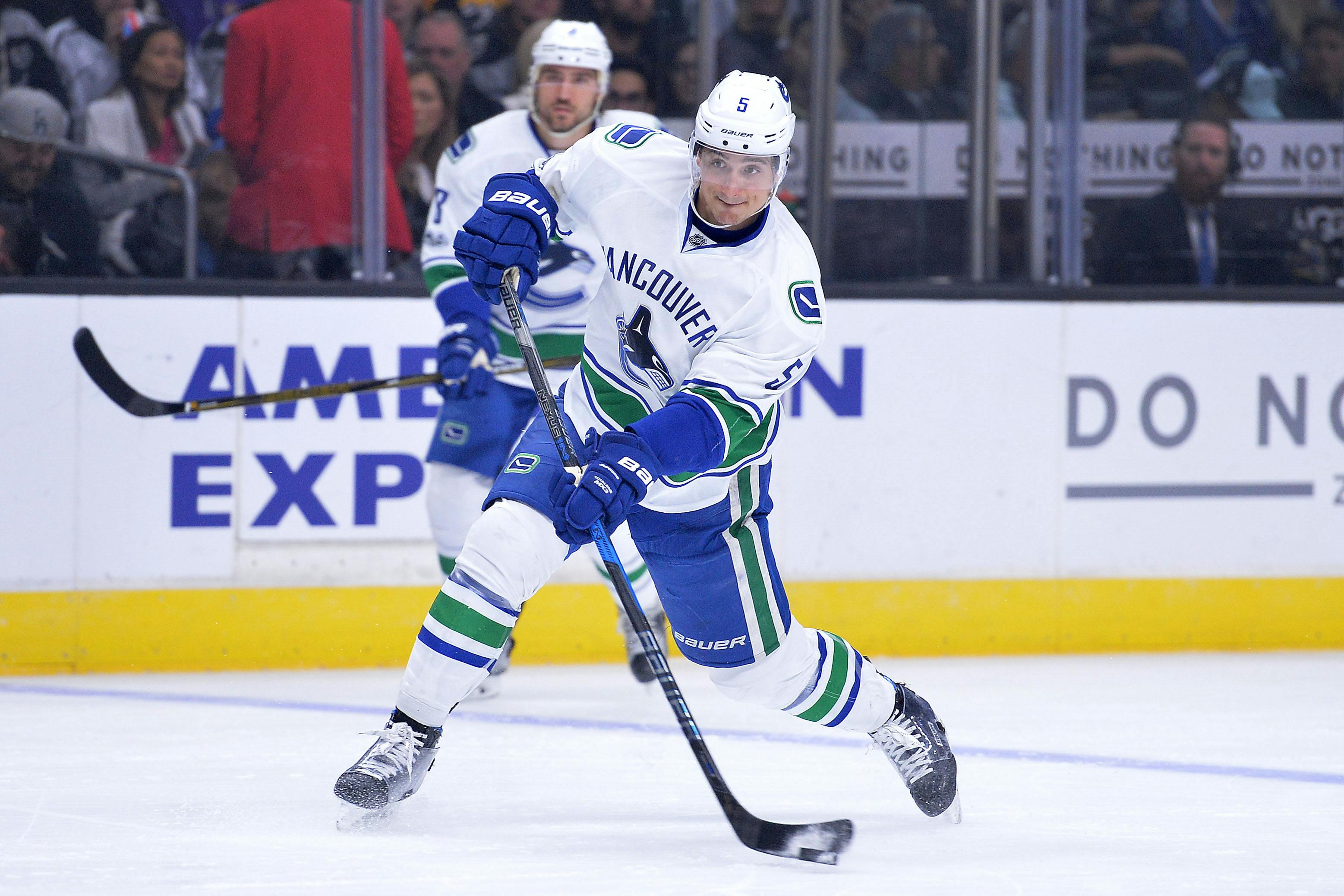The hope was that we could enter this season and not have to entertain the notion of Luca Sbisa as a top four defenceman.
With the influx of young defensive talent and the reality that Sbisa had done nothing in the previous two seasons to indicate he was capable of filling that role, that only seemed sensible. If that wasn’t enough, Sbisa’s usage (or lack thereof) on Team Europe at the World Cup of Hockey as a seventh defenceman should’ve driven the message home.
Yet here we are recounting another of his seasons as a Canuck, and his role only seems larger than when we last met.
While I’d like to be able to tell you that Sbisa got to that point with a significant step forward in his development — the type that would reward the Canucks’ for their boundless faith in the player — that really isn’t the case. Injuries played a role in Sbisa reentrance into the Canucks’ top four and bad habits kept him there with an unshakeable conviction.
By season’s end, Ryan Miller was the only Canuck to play more even strength minutes than Sbisa’s 1334. The next closest Canucks skater was Alex Edler at 1258 minutes of even strength ice-time.
In the Canucks’ defense, it’s entirely possible that they were fooled, as so many of us were, by Sbisa’s newfound semi-competence that he flashed as a third pair defenceman to begin the season. Playing just over 14-minutes a night at even strength, Sbisa led the team’s blue line in scoring and was the best Canucks regular at control the team’s run of expected goals by November’s end.
Had a chance to talk with Luca Sbisa about his resurgence, and embracing mentorship with young #Canucks blue line.https://t.co/8gJEJ3rUsJ pic.twitter.com/cxWZAyH0AQ
— J.D. Burke (@JDylanBurke) December 3, 2016
Even I bought in. Here’s a clip from an article I wrote December 3rd about Sbisa’s improved play this season:
Sbisa’s playing the best hockey of his career, every bit invigorated by the offensive freedoms of a newly minted system and supported by the defensive patience their coaches preach.
From the time I wrote that article to the end of the season, Sbisa’s ratio of expected goals controlled at even strength shrivelled to a horrific 42.26%. The Canucks didn’t fare any better at controlling shot attempts at even strength with Sbisa on the ice either, owning a ratio of shot attempts just barely over 43%.
I tend to think that if there’s a Mendoza line of base competency in any underlying shot-based metric, whether it takes into account shot quality or not, it’s probably somewhere around the 45% line. And that’s generous. Sbisa is significantly below in the two chief predictive metrics at our disposal.
It’s not something you can write off based on his defensive partners, either. This shouldn’t come as any surprise given Sbisa’s rise to the top of the pecking order, but he was playing with the best that the Canucks had to offer defensively, such as they are. And each of those defencemen fared considerably better without Sbisa compared to with him.
The aggregate impact Sbisa had on his teammate’s ability to control shot attempts at even strength is a -3.3% — the lowest mark among regular Canucks defencemen.
If this all feels familiar, there’s a good reason for that. The Sbisa I’m describing to you now is more or less the same one that you suffered through three seasons ago in his first campaign as a Canuck. He is what he is, and that’s a semi-competent third pair defenceman with a degree of utility based on his ability to play as poorly on his off-side as his preferred side. Put another way: the perfect seventh defenceman.
If there’s any consolation, it’s that the Canucks won’t be able to extend Sbisa far beyond his ability for a fourth season. Barring any significant changes to the Canucks’ blue line, he’s the odd man out for the Expansion Draft and more likely than not headed to the Vegas Golden Knights with one year and $3.6-million in tow.


